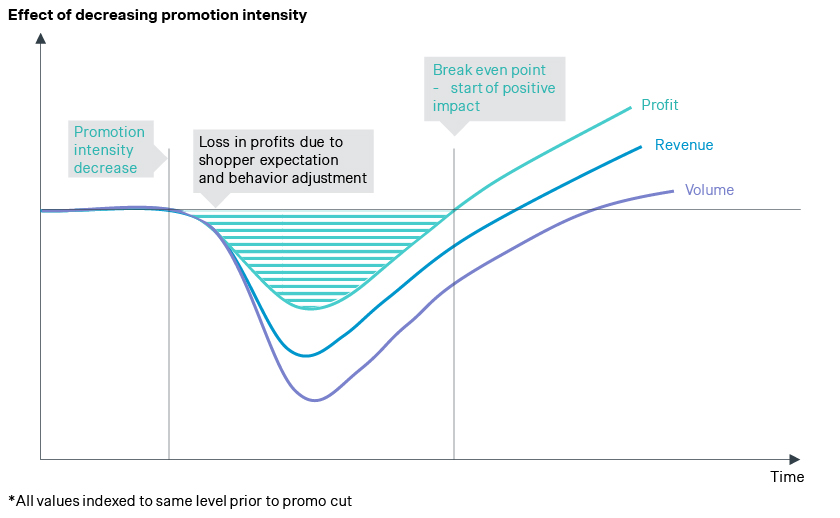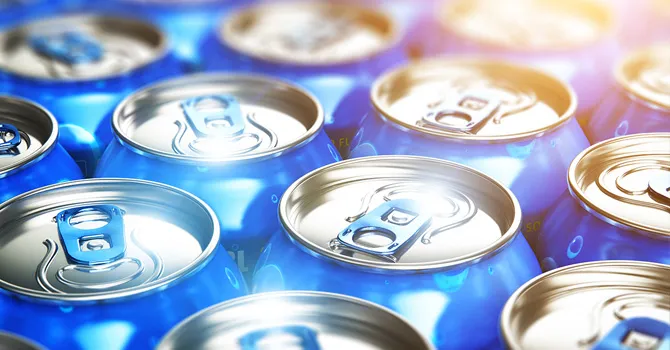Employing promotions to encourage purchases is becoming business routine in the MENA region. However, it is essential to understand how promotions influence shopper activity in the long term. In part 6 of this series, we break down how promotions change shopper behavior and advise on how to capture the potential in successful promotions management.
Although promotions will generally boost sales volumes in the short term, our experience shows that buying market share beyond the level deserved by product quality is detrimental to profitability and dangerous for sustainable business in the long term. Why so?
Promotions shape shopper behavior in the long term
Shoppers in the MENA region get used to promotions and develop an expectation that the product should be on promotion. Imagine your retailer is running a sale on soft drinks. For a month you purchase a two liter bottle on promotion for three dollars at a one dollar discount. At the end of the month, you find that the bottle is now selling for four dollars. Would you be happy that the promotion lasted a month or would you be dissatisfied that the promotion ended? Like every other shopper, you will likely be disappointed, having gotten used to the discount. Shoppers will find ways to continually benefit from promotions through various tactics.
Shoppers will wait for promotions and stock-up when it happens
Especially when shoppers have less money and look for ways to spend less, they will wait for a promotion to buy a product. In many cases, shoppers will even stock-up for their future needs, maximizing their benefits from the promotion, but in turn, inflating the promoted volume sold and decreasing the baseline.
Shoppers will invest time and effort to find the best promotions across retailers
Even though most companies employ promotions intending to convert more customers and eventually build customer loyalty, most customers become price sensitive as they get used to the promotions. Think of an online shopper; with a simple search, they can find the online store that offers the best discount on their preferred product, severely eroding loyalty. When the same product is available across multiple stores, shoppers will invest their effort to find outlets with the best deals and benefit from the best promotions available, increasing cannibalization between promotions with different retailers.
How can companies avoid these long-term side effects of promotions?
- Account for the long-term loss and effort required to adjust expectations.
While planning promotion mechanics for short-term volume boost, keep in mind that sales volume may see a dip once the promotions end. Make sure you have the right plans to prevent a downward spiral in sales as your customers look for alternative stores, similar products, or wait for the next round of promotions.

- Limit promotion intensity gradually.
Discontinuing promotions abruptly leads to high shopper dissatisfaction. On the other hand, a steady and gradual reduction in promotions will allow time for expectation adjustment and encourage shoppers to buy now. Due to a gradual decrease in promotion intensity, shoppers expect higher future prices, signaling them to buy now and helping to level out the dip in sales.
At Simon-Kucher, we design promotions mechanics for our clients that are not only beneficial in the short term, but also sustainable for businesses in the long term, thereby maximizing the overall promotions ROI.
Reach out to Lovrenc Kessler to learn more about how to avoid the long-term negative consequences of promotions in your business!
Read more from our promotional effectiveness series in the Middle East:
Part 2: The 7 drivers of effective sales promotions in the UAE
Part 3: Promotion effectiveness in MENA: How to fix the 30 percent of value-destroying promotions
Part 4: Digital promotions in MENA: Advantages of promotion database management
Part 5: 5 rules for producers and retailers to jointly build customer-centric promotions
Part 6: Promotion effectiveness in MENA: How do promotions change shopper behavior in the long term?








